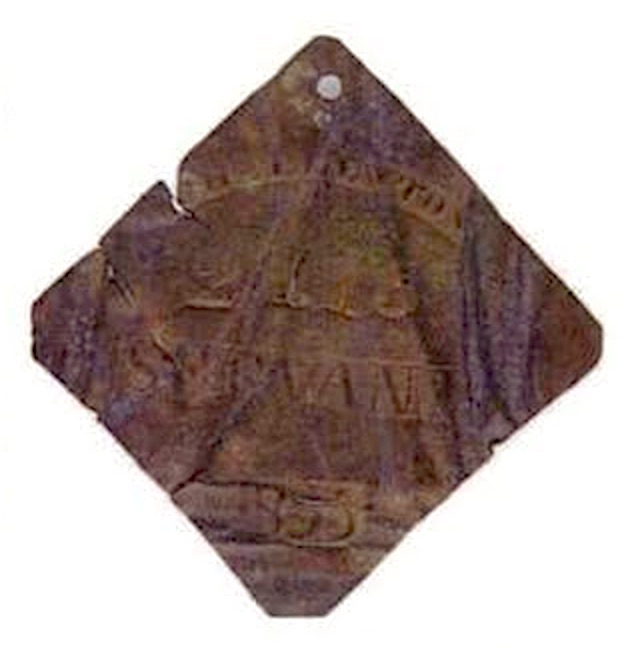What makes someone famous? Talent, courage, determination, or even having goodwill? If these are the characteristics that make up a famous person, then John Mood should undeniably be considered famous.
John Mood was born in 1792, in Charleston, South Carolina. Mood's father, Peter Mood Sr., emigrated from Germany and started his silversmith company in Charleston. According to Green-Wood.com, Peter Mood Sr. trained John Mood to be a silversmith along with his brother, Peter Mood Jr., and they eventually, ran their business together. However, John Mood is known for many other reasons besides being a successful silversmith.
 |
| Rev. John Mood (photo from Green-Wood.com) |
 |
| Pap Boat made by John Mood. A Pap Boat was used for feeding pap into infants' mouths. Pap was one of the first meals introduced to infants. (photo from oldsouthsilver.com) |
 |
| Bottom of a Pap Boat, with Mood's signature stamp (photo from oldsouthsilver.com) |
| Spoon set made by John Mood (photo from marksforantiques.com) |
 |
| Slave badge made by John and Peter Mood (photo from Green-Wood.com) |
There is a section in the book, Slave Badges and the Slave-Hire System in Charleston, South Carolina, 1783-1865, written about John Mood. It estimates that Mood produced about 3,500 slave badges between 1831 and 1832 and the same amount again, between 1834 and 1835.
It was against the law if a slave wasn't wearing a slave badge, slaves without badges were fined and/or their owner was fined. However, slaves that were working on plantations weren't required to wear the badges, only the slaves working in the city. According to the National Museum of American History, the badges gave the wearer more freedom within the city, than slaves working on plantations. These badges were made of copper and listed the current year, number of the tag, and the occupation of the slave.
John Mood was born Lutheran but converted to Methodist, and eventually became a Methodist minister according to the Slave Badges and the Slave-Hire System book. The book also says Methodists were known for their stand on the slavery issue and many favored abolition, which Mood agreed with. According to the book, Mood prayed over the issue of slavery in South Carolina and even decided to break the law to secretly teach black minsters to read and write. It takes a lot of courage to put yourself in danger in order to help others, and it shows how selfless John Mood really was.
You could even say that John Mood was the "silver lining" to many slaves. Slave Badges and the Slave-Hire System says this about Mood, "In 1832, he organized a Sunday school for black children and maintained it personally for years, not backing down even when threatened with being tarred and feathered." In addition to that, he also bought slaves at auctions in order to set them free. He was very determined to do whatever he could to help free slaves and give them a better life.
 |
| Bethel United Methodist Church |
 |
| John Mood's grave (photo from findagrave.com) |
No comments:
Post a Comment